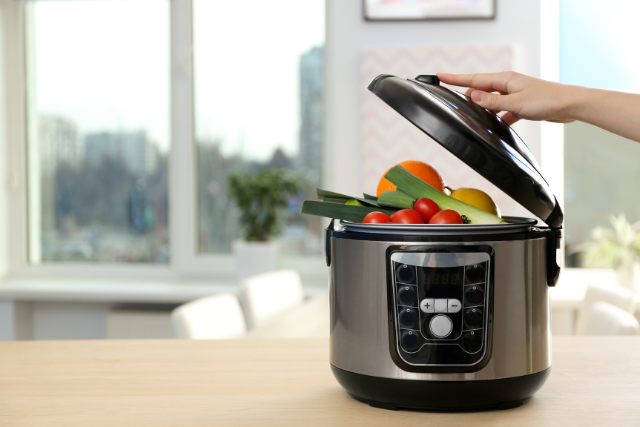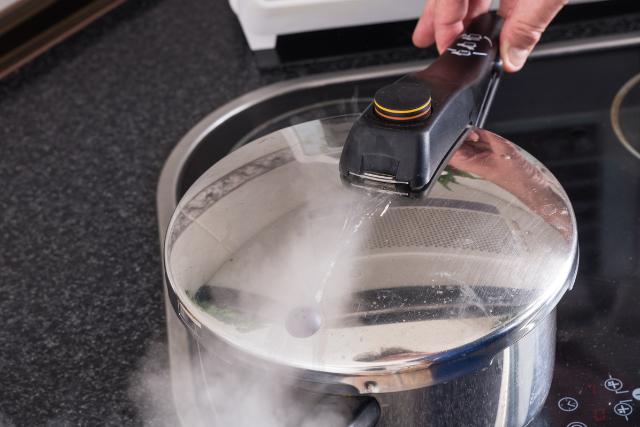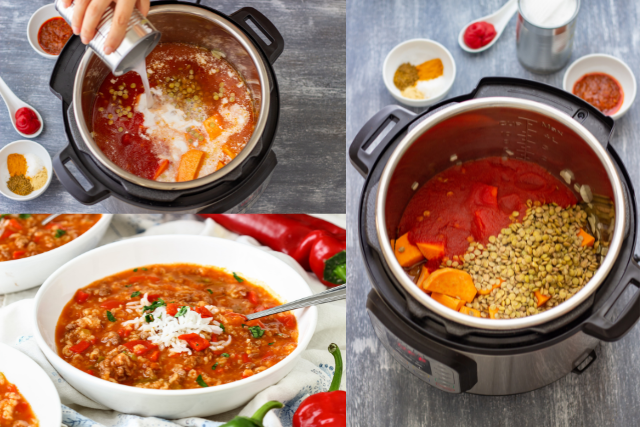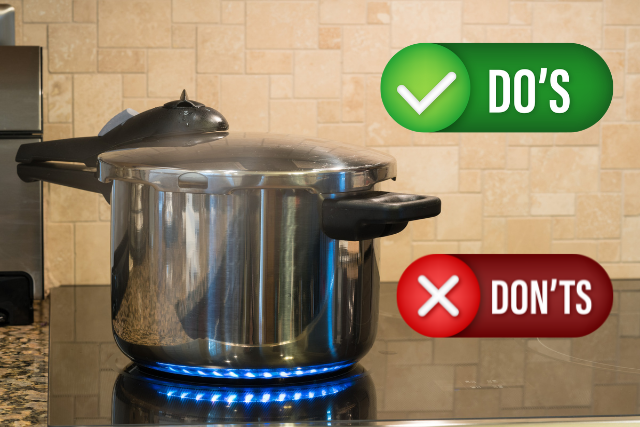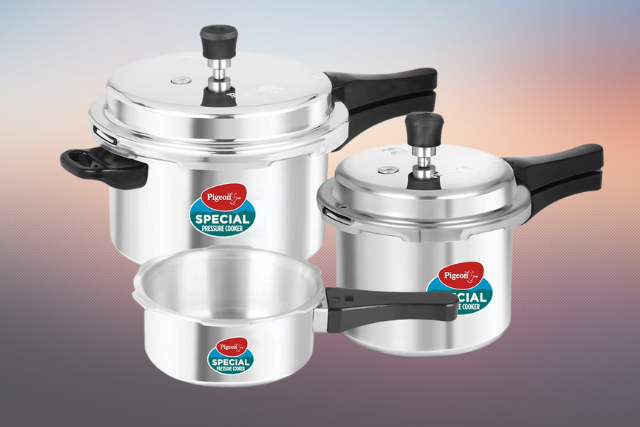How To Clean A Pressure Cooker: Ultimate Guide
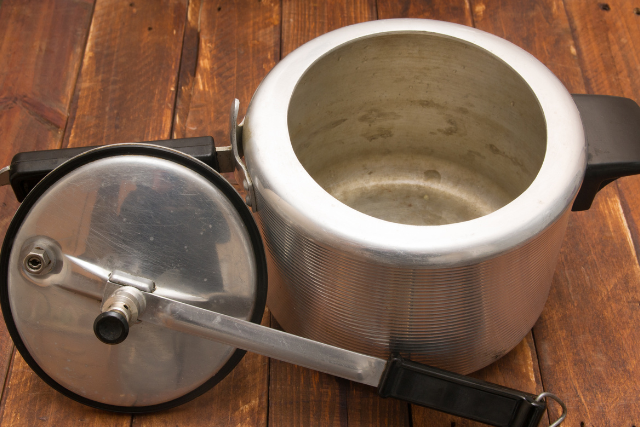
So, you’ve cooked a delectable supper and wowed everyone with your culinary prowess. You return to your kitchen, proud and contented, only to be confronted by the strewn-about pots and pans pleading for your attention. The difficult stains, scorched food, and stuck-on leftovers require a thorough cleaning, which is probably the last thing you want after a fun night out. It hits you the hardest when making Indian food with so many spices and ingredients. Even with intense care, food will sometimes burn and taint the cooker.
How To Clean A Pressure Cooker?
Put your anxieties to rest because we’ve compiled a list of simple cleaning methods that work like magic. These can be used for other things, but because the pressure cooker is the most valued piece of cookware in every Indian kitchen, reserve them for the next time you make a delicious chicken curry or a biryani.
The following are the most effective method for the removal of Burned Food traces and Black Stains:
Use of Hot Water: Filling the pressure cooker with water and putting it on the stove for 10-15 minutes on low heat is the quickest approach to get rid of the charred residues. It will aid in loosening any food particles that may be readily washed away later.
Use of Onion: A pressure cooker is a long-term friend. You’ve presumably been using it for a few years, and the surface may have developed black stains over time. Use this simple method to make your pressure cooker look clean and sleek again. Cover the stained parts with water in your pressure cooker. Put 5 to 6 onion skins (the onion’s outer layer) in the water. Close the cover and place it on the stovetop over high heat. Allow the onion skin and water to boil for 20 to 30 minutes. Remove it and carefully scrub the surface once it has cooled.
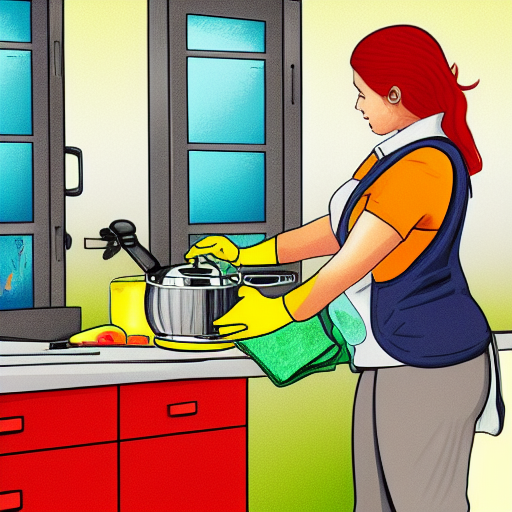
How to Clean Aluminium Pressure Cookers
Use of Tartaric Acid: Tartaric acid is an ingredient in the Cream of Tartar. It’s powdered sediment found at the bottom of wine casks. The procedure is the same in both cases.
- Fill the pressure chamber halfway or 3/4ths full with water. Don’t fill it to the brim.
- Place the cooker on the flame with 2-3 tablespoons of tartaric acid. You can also add the same amount of lemon juice on the surface for the acidic effect.
- Heat it until the water begins to boil. You may see that the black marks have vanished after a few minutes.
- Remove the burner from the heat and clean it with regular soap.
Scrub the area using a sponge or towel. Clean the scrape. To avoid harming the surface, use a plastic scouring pad instead of a metal one. These steps will help you to restore your pressure cooker’s gleaming exterior.
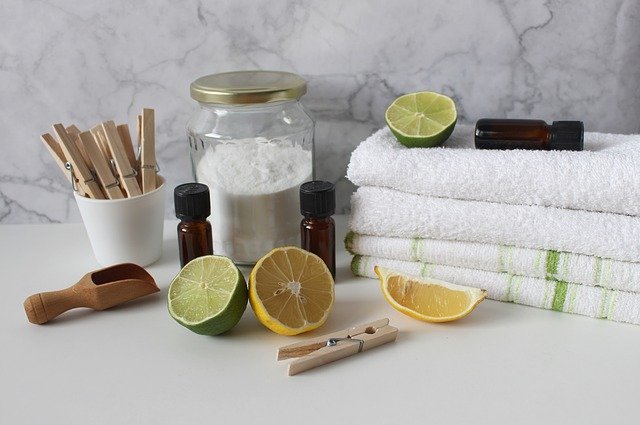
Use of Vinegar: A combination of water and white vinegar soaked overnight in the cooker can also aid in removing dirt. When deciding how to clean an aluminum pressure cooker, remember that repeated and excessive use of vinegar can leave a horrible stain on the metal, so use caution and constraint and ensure the vinegar is well washed away after cleaning.
It’s a good idea to test a little amount of the vinegar solution on an inconspicuous region of your appliance first to make sure there aren’t any negative effects.
Use Baking Soda For the Removal of Hard and Old Stains:
Baking soda is the ideal item to remove a stiff ring of crud that has developed around the bottom of your pressure cooker over a lengthy period. This miraculous cleaner is a must-have in any kitchen. Fill your pressure cooker halfway with water and add two to three tablespoons of baking soda solution or paste. Allow it to sit in the cooker for several hours before scrubbing it clean with a sponge, towel, or plastic scourer.
After applying the baking soda solution, simmer for a couple of hours on low heat for even more challenging and oldest stains. Even a few drops of liquid soap will be enough. Remove the pan from the heat and set it aside to cool. Scrub the cooker with baking soda to remove any leftovers and reveal the gleaming surface once it has cooled. Baking soda is also excellent for cleaning enameled or painted cookware because it is gentle and won’t damage the finish.

Cleaning and maintaining the rubber gasket and accessories
Rubber gaskets are rings widely used to provide an airtight seal between the lid and the mouth of a pressure cooker. Like many rubber items, rubber gaskets are susceptible to drying out when exposed to the sun, heat, and dirt. Because of this, your gaskets may become broken and brittle, and their effectiveness will be compromised. Maintaining the pliability of your gaskets necessitates some effort, but it will save you money in the long run by avoiding the need to replace them frequently.
Following are the steps to clean rubber gaskets and other related accessories of a pressure cooker:
- Remove the gasket and valve (follow the instructions that came with the cooker).
- Wash them independently in the same manner as above.
- Gently clean with a dry cloth. (Do not keep in direct sunlight for drying).

Always yse proper cleaning gloves safety purpose as well as easy operation.
How to Clean an Electric Pressure Cooker
Electric Pressure Cookers need to be cleaned after each use. There are parts like the inner pot, base, trivet, lid, silicone ring, pressure valve, condensation collector, anti-block shield, etc., in it. All of these parts, except the base, are dishwasher safe, according to most manufacturers.
The cooker base should be kept dry, however, a damp cloth can be used to clean it down.
If a lingering odor is noticed after all of these locations have been thoroughly cleaned, it originates most likely from the silicon sealing ring, which holds food aromas. Soaking the ring in vinegar, turning the cover upside down between usage or leaving the ring open to the air, and inserting a small box of baking soda in the unit between uses have all helped to diffuse the scents.
Other ideas include exposing the ring to the sun, wiping it with a stainless steel soap disc, soaking or heating it in lemon water and baking soda, or buying two rings, one for savory and one for sweet. If a second sealing ring is desired or if a ring has to be replaced, only use made initial parts to ensure that the Electric Pressure Cooker functions appropriately and safely.
One major issue that Electric Pressure Cooker users are concerned about is the progressive darkening of stainless steel inner pots. If it’s turning a blue-yellow color, white vinegar will restore it to its former glory. Allow white vinegar to sit in the saucepan for at least 5 minutes before rinsing it with water. If the bottom of the pot has become dull due to sautéing or hard water, a tiny bit of baking soda or a non-abrasive scouring cleanser is applied to a damp cloth or sponge after rinsing and drying to restore the original sheen. A metallic scrubber should not be used for scouring because it will ruin the finish!
Before cleaning an electric pressure cooker always refer to your pressure cooker’s instruction booklet.
- Remove the pressure cooker from the outlet. If you’ve just used your pressure cooker, unplug it and let it cool.
- Remove the cover as well as the internal pot. For the time being, put these in the sink.
- Make a cleaning solution with 1 cup of water. (Use the cleaner recommended supplier of electric pressure cooker)
- Clean the outside housing. It’s important to remember that this device contains electronic components and should never be submerged in water.
- Wipe the outside of the housing with your cleaning solution and a damp cloth or sponge to remove crumbs and stains. To avoid watermarks, wipe with a dry microfiber towel.
- The lid and its components should be washed by hand.
- Remove the handle from the steam-release valve. To check for food particles, gently pull this piece off. Using a damp towel or sponge, wipe your solution clean.
- Remove the anti-block barrier from your computer. To clean the steam valve, remove this from the underside of the lid (do not remove the steam valve). If you frequently utilize the quick release or cook sticky meals, you should do this more frequently.
- Remove the silicone ring and float valve. Wipe both parts down with a moist cloth doused with Simple Green solution. Check that the valve component can freely slide up and down.
- Allow these components to air dry completely before replacing them, or dry them with a dry microfiber cloth.
- Remove the sealing ring and clean it. To eradicate any leftover odors, clean the silicone ring that locks the lid shut regularly. Allow it to dry completely in the open air.
- Clean the inner pot as well as the steam rack. Before putting these components in the dishwasher, ensure they are safe. If not, manually wash them as usual. Allow airing to dry or dry with a microfiber cloth.
- Reassemble. Ensure all your pieces are dehydrated and secure to achieve a proper seal.
With all the above guidelines, cleaning your pressure cooker should be a good experience, and you’ll be able to keep cooking tasty and healthy meals in no time! Good Luck..!!
Recommended Products for Cleaning Pressure Cookers
[azonpress_tables id=”1″]
Conclusion
Following these simple steps will make your pressure cooker look and function like new. A pressure cooker is a great addition and a cooking assistant to any kitchen; with proper care, it will last for many years.

